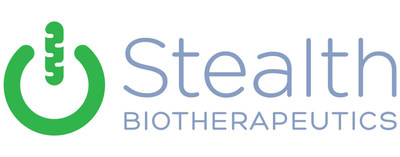Stealth BioTherapeutics Presents New SBT-272 Data Demonstrating Improvement in Upper Motor Neuron Function in ALS Disease Model at Keystone Neurodegeneration Symposium
Stealth BioTherapeutics Corp (Nasdaq: MITO) presented promising preclinical data for SBT-272 at the Keystone Neurodegeneration Symposium. The data indicates significant enhancement in mitochondrial health and neuronal function, specifically in upper motor neurons linked to amyotrophic lateral sclerosis (ALS) and frontotemporal dementia (FTD). A Phase 1 study assessing SBT-272's safety and tolerability in healthy volunteers is currently in progress. The drug showed superior effects over existing treatments like edaravone and AMX0035, marking a potential breakthrough in ALS therapies.
- SBT-272 demonstrated significant improvement in mitochondrial health and neuronal function in preclinical studies.
- The drug showed superior axon outgrowth effects compared to edaravone and AMX0035.
- Ongoing Phase 1 study aims to evaluate safety and tolerability, indicating continued development focus.
- None.
Insights
Analyzing...
SBT-272 improved neuronal health, superior to other approved and investigational agents
Phase 1 study to evaluate safety and tolerability of SBT-272 in healthy volunteers is underway
BOSTON, June 8, 2022 /PRNewswire/ -- Stealth BioTherapeutics Corp (Nasdaq: MITO), a clinical-stage biotechnology company focused on the discovery, development, and commercialization of novel therapies for diseases involving mitochondrial dysfunction, announced today the presentation of new SBT-272 preclinical data demonstrating functional improvement in upper motor neurons with TDP-43 pathology, which plays a significant role in both amyotrophic lateral sclerosis (ALS) and frontotemporal dementia (FTD). The data were presented at the Keystone Neurodegeneration Symposium in Keystone, CO held June 5-9, 2022. A Phase 1 study to evaluate the safety and tolerability of SBT-272 in healthy volunteers is underway.
SBT-272 significantly improved mitochondrial structural integrity and motility in TDP-43 mutant (A315T)-expressing upper motor neurons. These enhancements in mitochondrial health were associated with improved axon outgrowth, a key indicator of improved neuronal health. The effect of SBT-272 on axon outgrowth was superior to edaravone (approved for the treatment of ALS) and AMX0035 (NDA under FDA review). Chronic in vivo administration of SBT-272 reduced upper motor neuron degeneration and neuroinflammation in the motor cortex of the prp‐hTDP‐43A315T‐UeGFP mouse model of ALS. Together, these data support further investigation of SBT-272 as a potential treatment for ALS with TDP-43 pathology.
"Upper motor neuron degeneration is an early event in ALS, which is characterized by degeneration of both the upper motor neurons in the brain and the lower motor neurons in the spinal cord," said Hande Ozdinler, PhD, Associate Professor of Neurology, Feinberg School of Medicine, Northwestern University. "Therefore, to build effective treatment strategies for ALS, it is necessary for therapeutics to demonstrate efficacy on upper motor neuron health and function. The new findings presented today further strengthen the importance of improving mitochondrial health with respect to TDP-43 pathology in ALS and lay a strong foundation for the clinical development of SBT-272 for ALS patients."
"ALS is a devastating progressive neuromuscular disease with a significant unmet medical need," said Reenie McCarthy, Chief Executive Officer of Stealth BioTherapeutics. "We designed SBT-272 to target mitochondrial dysfunction in the brain, which is known to precede and contribute to several neurodegenerative diseases, including ALS. We are encouraged that Dr. Ozdinler's team has elucidated these signals of neuronal protection, and we look forward to working with the ALS community to progress the clinical development of SBT-272."
SBT-272 is a novel small molecule that targets the cardiolipin-rich inner mitochondrial membrane which is crucial for normal mitochondrial structure and function. Preclinical SBT-272 data have demonstrated mitochondria-protective and neuroprotective effects in models of ALS, FTD, alpha-synucleinopathy, a rare form of dementia that is similar to Parkinson's disease, Huntington's disease and ischemic stroke. We have also observed SBT-272-mediated improvements in functional assessments, lifespan, inflammation, and reduction of protein aggregates across certain nonclinical models. A Phase 1 study evaluating subcutaneous SBT-272 in healthy volunteers is ongoing. We aim to develop SBT-272 for ALS and other neurological diseases of mitochondrial dysfunction.
We are a clinical-stage biotechnology company focused on the discovery, development, and commercialization of novel therapies for diseases involving mitochondrial dysfunction. Mitochondria, found in nearly every cell in the body, are the body's main source of energy production and are critical for normal organ function. Dysfunctional mitochondria characterize a number of rare genetic diseases and are involved in many common age-related diseases, typically involving organ systems with high energy demands such as the eye, the neuromuscular system, the heart and the brain. We believe our lead product candidate, elamipretide, has the potential to treat ophthalmic diseases entailing mitochondrial dysfunction, such as dry AMD, rare neuromuscular disorders, such as primary mitochondrial myopathy and Duchenne muscular dystrophy, and rare cardiomyopathies, such as Barth syndrome. We are evaluating our second-generation clinical-stage candidate, SBT-272, for rare neurological disease indications, such as amyotrophic lateral sclerosis and frontotemporal lobar dementia, following promising preclinical data. We have optimized our discovery platform to identify novel mitochondria-targeted compounds which may be nominated as therapeutic product candidates or utilized as mitochondria-targeted vectors to deliver other compounds to mitochondria.
This press release contains forward-looking statements within the meaning of The Private Securities Litigation Reform Act of 1995. Such forward-looking statements include those regarding Stealth BioTherapeutics' expectations for SBT-272 preclinical data and Phase 1 clinical development efforts. Statements that are not historical facts, including statements about Stealth BioTherapeutics' beliefs, plans and expectations, are forward-looking statements. The words "anticipate," "expect," "hope," "plan," "potential," "possible," "will," "believe," "estimate," "intend," "may," "predict," "project," "would" and similar expressions are intended to identify forward-looking statements, although not all forward-looking statements contain these identifying words. Stealth BioTherapeutics may not actually achieve the plans, intentions or expectations disclosed in these forward-looking statements, and you should not place undue reliance on these forward-looking statements. Actual results or events could differ materially from the plans, intentions and expectations disclosed in the forward-looking statements as a result of known and unknown risks, uncertainties and other important factors, including: Stealth BioTherapeutics' ability to obtain additional funding and to continue as a going concern; the impact of the COVID-19 pandemic; the ability to successfully demonstrate the efficacy and safety of Stealth BioTherapeutics' product candidates and future product candidates; the preclinical and clinical results for Stealth BioTherapeutics' product candidates, which may not support further development and marketing approval; the potential advantages of Stealth BioTherapeutics' product candidates; the content and timing of decisions made by the FDA, the EMA or other regulatory authorities, investigational review boards at clinical trial sites and publication review bodies, which may affect the initiation, timing and progress of preclinical studies and clinical trials of Stealth BioTherapeutics product candidates; Stealth BioTherapeutics' ability to obtain and maintain requisite regulatory approvals and to enroll patients in its planned clinical trials; unplanned cash requirements and expenditures; competitive factors; Stealth BioTherapeutics' ability to obtain, maintain and enforce patent and other intellectual property protection for any product candidates it is developing; and general economic and market conditions. These and other risks are described in greater detail under the caption "Risk Factors" included in Stealth BioTherapeutics' most recent Annual Report on Form 20-F filed with the Securities and Exchange Commission ("SEC"), as well as in any future filings with the SEC. Forward-looking statements represent management's current expectations and are inherently uncertain. Except as required by law, Stealth BioTherapeutics does not undertake any obligation to update forward-looking statements made by us to reflect subsequent events or circumstances.
Investor Relations
Kendall Investor Relations
Adam Bero, Ph.D.
abero@kendallir.com
IR@StealthBT.com
![]() View original content to download multimedia:https://www.prnewswire.com/news-releases/stealth-biotherapeutics-presents-new-sbt-272-data-demonstrating-improvement-in-upper-motor-neuron-function-in-als-disease-model-at-keystone-neurodegeneration-symposium-301563589.html
View original content to download multimedia:https://www.prnewswire.com/news-releases/stealth-biotherapeutics-presents-new-sbt-272-data-demonstrating-improvement-in-upper-motor-neuron-function-in-als-disease-model-at-keystone-neurodegeneration-symposium-301563589.html
SOURCE Stealth BioTherapeutics Inc.








